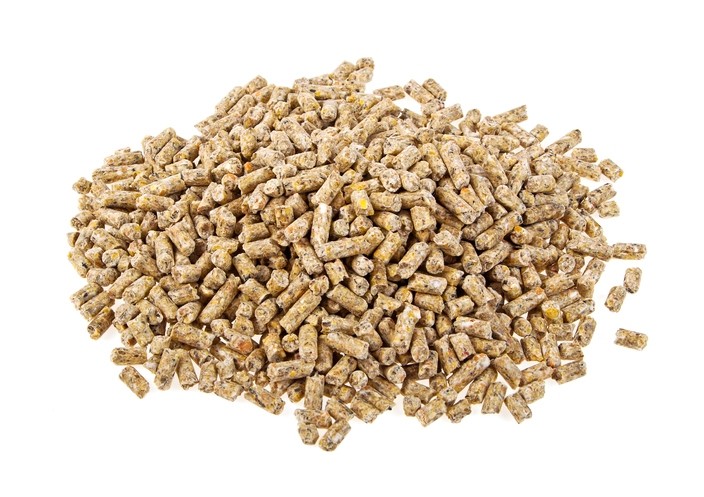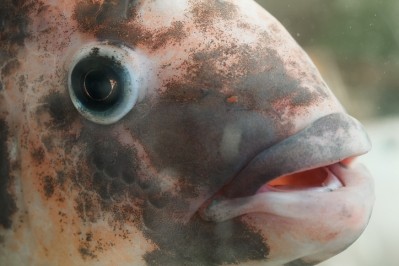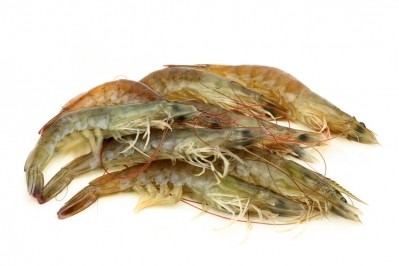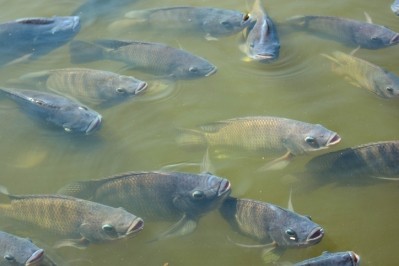Team hits on way to optimize fish feed pellet production

An international team of researchers explored the impact of pre-gelatinized (PG) taro and broken rice in two different trials on various physical characteristics of aqua feed pellets using a single screw extruder.
They concluded that the use of PG taro and broken rice offers flexibility to fish nutritionists in terms of producing a variety of lower cost floating pellets with less starch restriction.
They reported their findings in Animal Feed Science and Technology.
“This study demonstrated that relatively low levels of PG taro and broken rice had several important benefits [for] the characteristics of the pellets which included high floatability, durability and integrity during water immersion as well as a relatively low moisture content.
“These are all important considerations when producing pellets since these can reduce product wastage, transportation costs as well as improving hygiene during storage.”
They said additional research, though, is required to investigate the effects of carbohydrate utilization and digestibility in fish from the use of PG taro and broken rice in extruded pellets.
Background
The authors, based at universities in Iran, Malaysia and the US, said understanding the relationship between the ingredients, processing parameters, and equipment design and operation is critical for the development of new, high quality fish pellets.
They argue that modifications of starches prior to extrusion may potentially improve their functional properties.
“Pre-gelatinization is one of the simplest physical modifications of starch … (Sørensen et al., 2010). When processed by heat treatment, the pre-gelatinized starches have increased water absorption and solubility indices upon dispersion in cold water compared to their native forms, which may be due to various physical changes including molecular depolymerzation, irreversible granule swelling, loss of birefringence and crystallinity (Colonna et al., 1984 ; Freitas et al., 2004).”
They noted research by Sørensen et al. (2010) that showed that gelatinized starch improved the durability of extruded pellets while Amirkolaie et al. (2006) indicated that gelatinized starch significantly improved the digestibility, growth and faecal removal rate for tilapia.
Methodology
The team carried out two trials with the objective of studying, firstly, the impact of using PG taro and, secondly, broken rice along with various extruder die temperatures (125, 140, 155 and 170 °C) on the physical properties of extruded pellets including included floatability, expansion ratio, bulk density, pellet durability, water absorption and solubility, moisture content and pellet microstructure.
They used fresh taro corms (Colocasia esculenta), which had been purchased from a local market in Malaysia. They cut the peeled taro corms into slices and then steamed and cooled them to room temperature. Then, they dried the taro slices in an electric convection oven (60 °C, 48 h) and, subsequently, ground them using a laboratory-scale hammer mill. They sieved them to obtain the flour.
Similarly, broken rice (Oryza sativa) was finely ground to flour, they added.
The researchers said they modified the taro and broken rice flour using a pre-gelatinization method whereby 1:1 flour solutions (1 kg flour + 1 kg deionized water) were autoclaved for 10 min (121 °C, 15 PSI). They then dried the gelatinized flour in an electric convection oven (60 °C) for 48 hours and ground them to a powder form using a hammer mill.
The team said they formulated six balanced isocaloric diets (14.65 kJ/g). They achieved an isonitrogenous targeted net protein of 30% with appropriate amounts of fishmeal, soybean meal, corn meal, rice bran, vegetable oil, vitamin and mineral premix, alpha-cellulose, and then included three different levels of PG taro and broken rice (15, 20 and 25% as fed basis).
For each blend, the ingredients were ground and mixed using a dough mixer.
All the blends were preconditioned to a 40% moisture content and extruded using a single screw extruder, with the three zones of the barrel temperature profile (70, 90 and 100 °C) and screw speed (150 rpm) of the extruder constant throughout the extrusion cooking process, reported the scientists.
Results
The said their findings showed significant effects on most of the physical properties of the pellets from the inclusion of both PG taro and broken rice along with the die temperature level.
“Changing the inclusion rate of PG taro and broken rice from 15 to 25% significantly increased the expansion ratio and floatability of the extruded pellets. Similarly, as the die temperature was elevated in both experiment, the floatability of the extruded pellets in diets containing PG taro and broken rice increased by 114.62% and 21.88%, respectively.
They also noted that the use of PG taro and broken rice resulted in highly durable pellets in all treatments.
“Microstructure analysis of the extruded pellets revealed that using PG taro and broken rice, the surface of the extruded pellets became coarser when the die temperature was elevated from 125 to 170 °C and the PG taro and broken rice inclusion level was at 15%.”
Source: Animal Feed Science and Technology
Online ahead of print:https://doi.org/10.1016/j.anifeedsci.2017.12.007
Title: Effects of extruder die head temperature and pre-gelatinized taro and broken rice flour level on physical properties of floating fish pellets
Authors: MS Kamarudin, CR de Cruz, CR Saad, N Romano, E Ramezani-Fard









